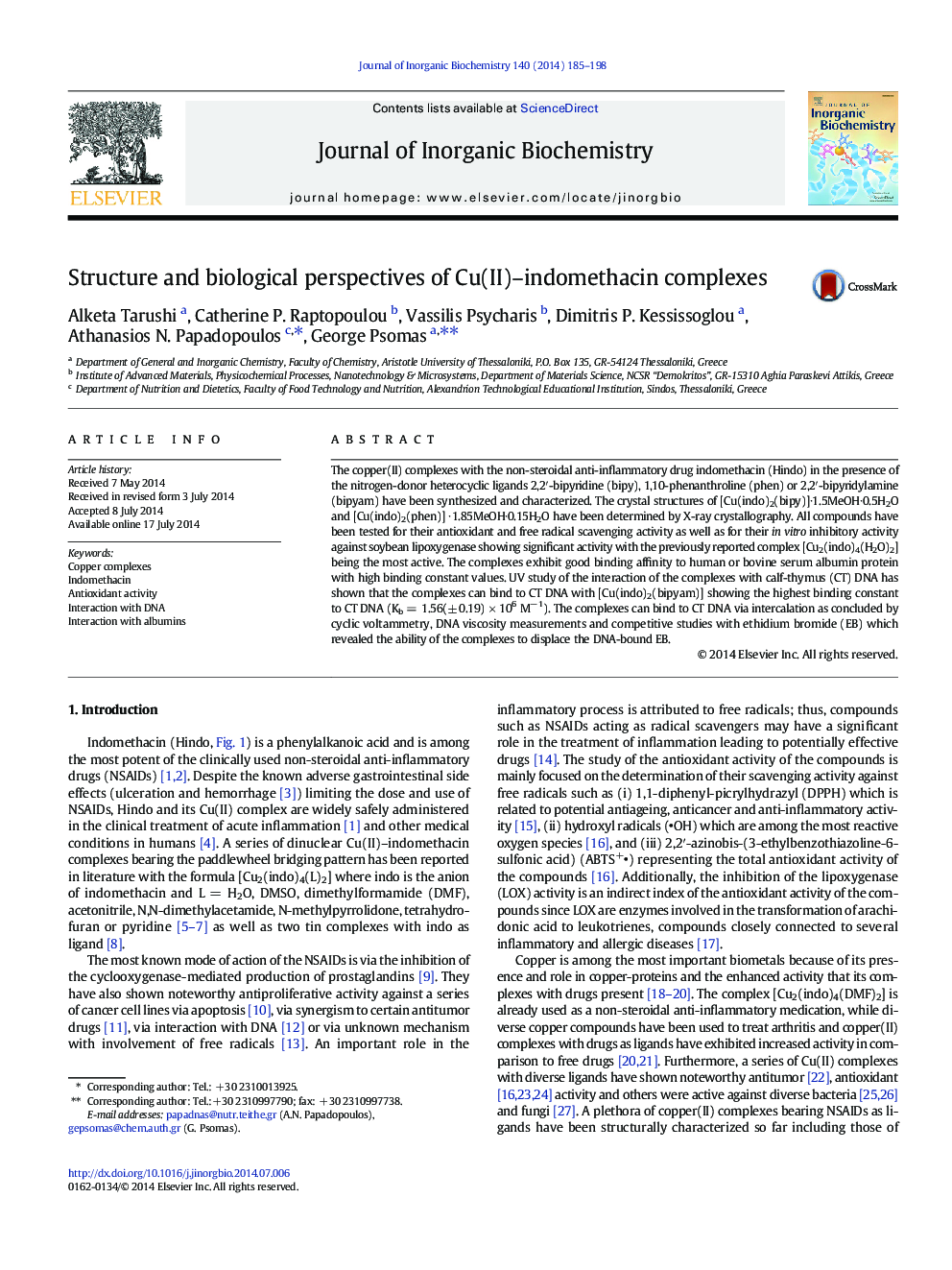| Article ID | Journal | Published Year | Pages | File Type |
|---|---|---|---|---|
| 1317312 | Journal of Inorganic Biochemistry | 2014 | 14 Pages |
The copper(II) complexes with the non-steroidal anti-inflammatory drug indomethacin (Hindo) in the presence of the nitrogen-donor heterocyclic ligands 2,2′-bipyridine (bipy), 1,10-phenanthroline (phen) or 2,2′-bipyridylamine (bipyam) have been synthesized and characterized. The crystal structures of [Cu(indo)2(bipy)]∙1.5MeOH∙0.5H2O and [Cu(indo)2(phen)] ∙ 1.85MeOH∙0.15H2O have been determined by X-ray crystallography. All compounds have been tested for their antioxidant and free radical scavenging activity as well as for their in vitro inhibitory activity against soybean lipoxygenase showing significant activity with the previously reported complex [Cu2(indo)4(H2O)2] being the most active. The complexes exhibit good binding affinity to human or bovine serum albumin protein with high binding constant values. UV study of the interaction of the complexes with calf-thymus (CT) DNA has shown that the complexes can bind to CT DNA with [Cu(indo)2(bipyam)] showing the highest binding constant to CT DNA (Kb = 1.56(± 0.19) × 106 M− 1). The complexes can bind to CT DNA via intercalation as concluded by cyclic voltammetry, DNA viscosity measurements and competitive studies with ethidium bromide (EB) which revealed the ability of the complexes to displace the DNA-bound EB.
Graphical abstractCopper(II) complexes of the non-steroidal anti-inflammatory drug indomethacin exhibit higher binding constants than free drug towards DNA and serum albumins and show significant antioxidant activity.Figure optionsDownload full-size imageDownload as PowerPoint slide
